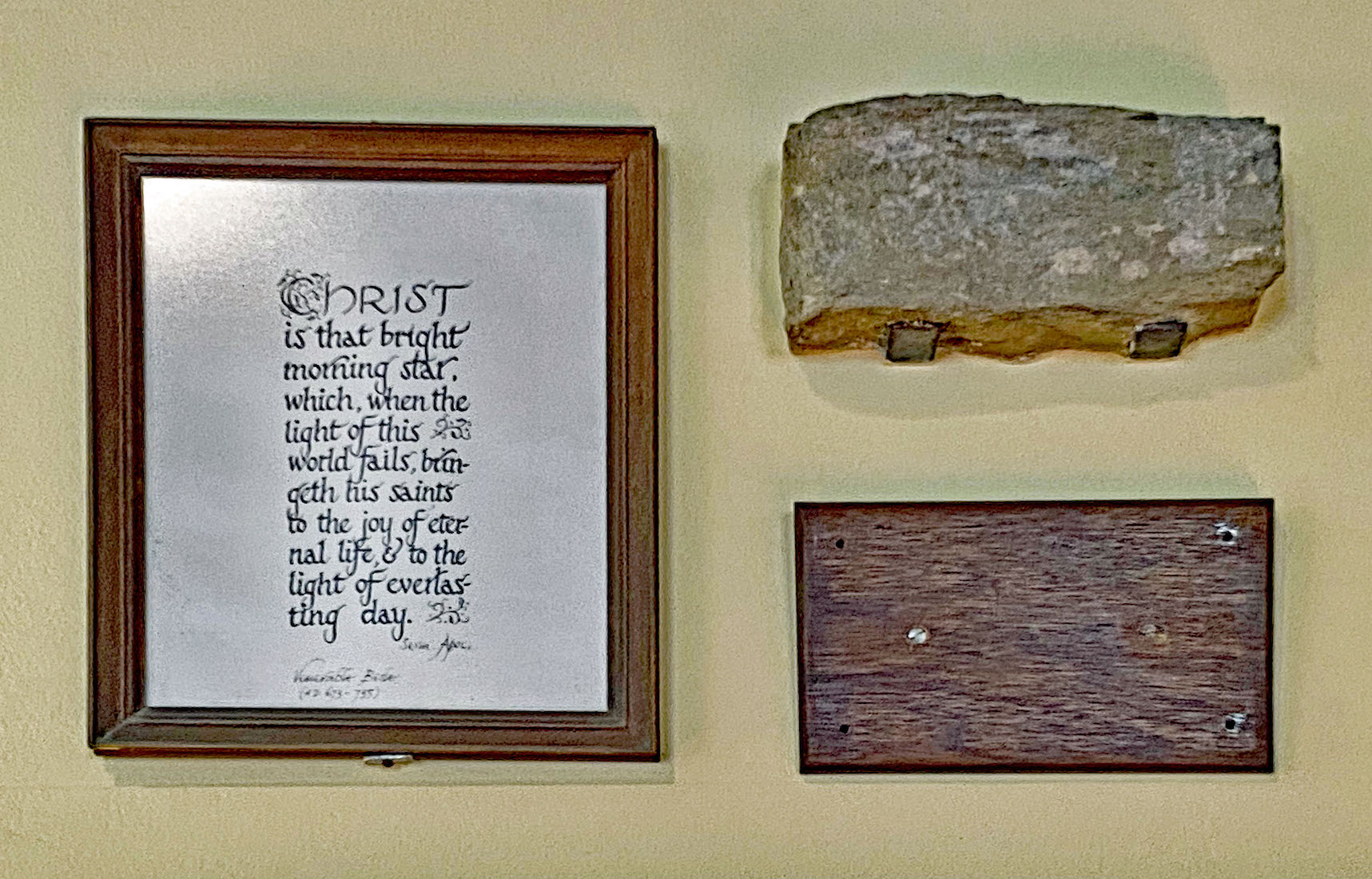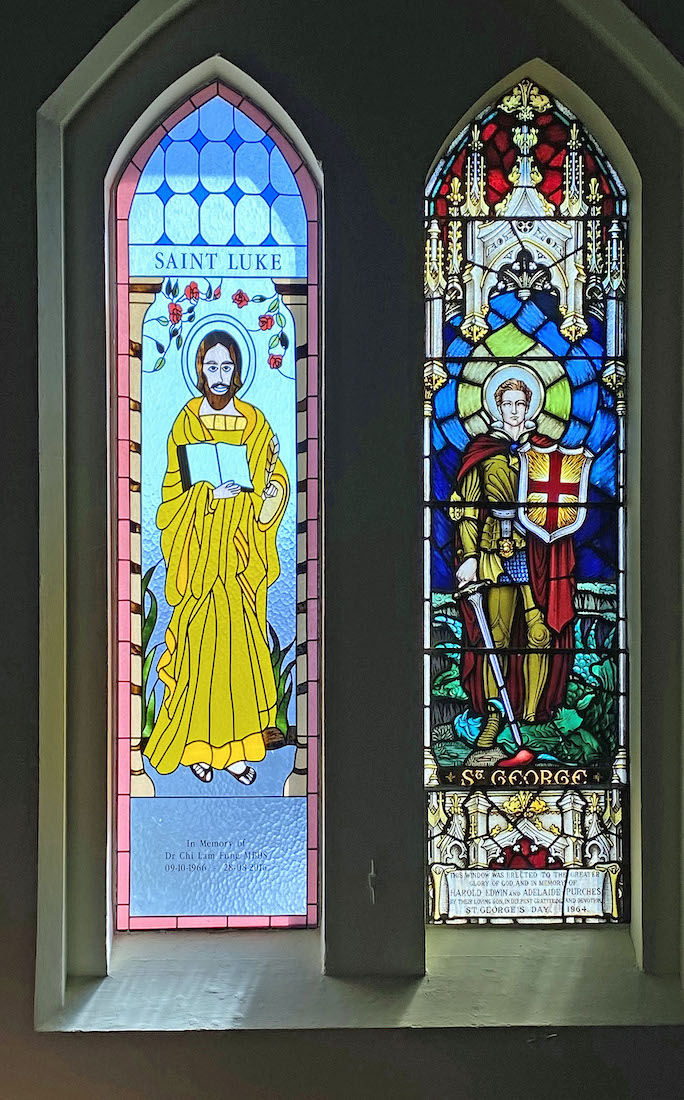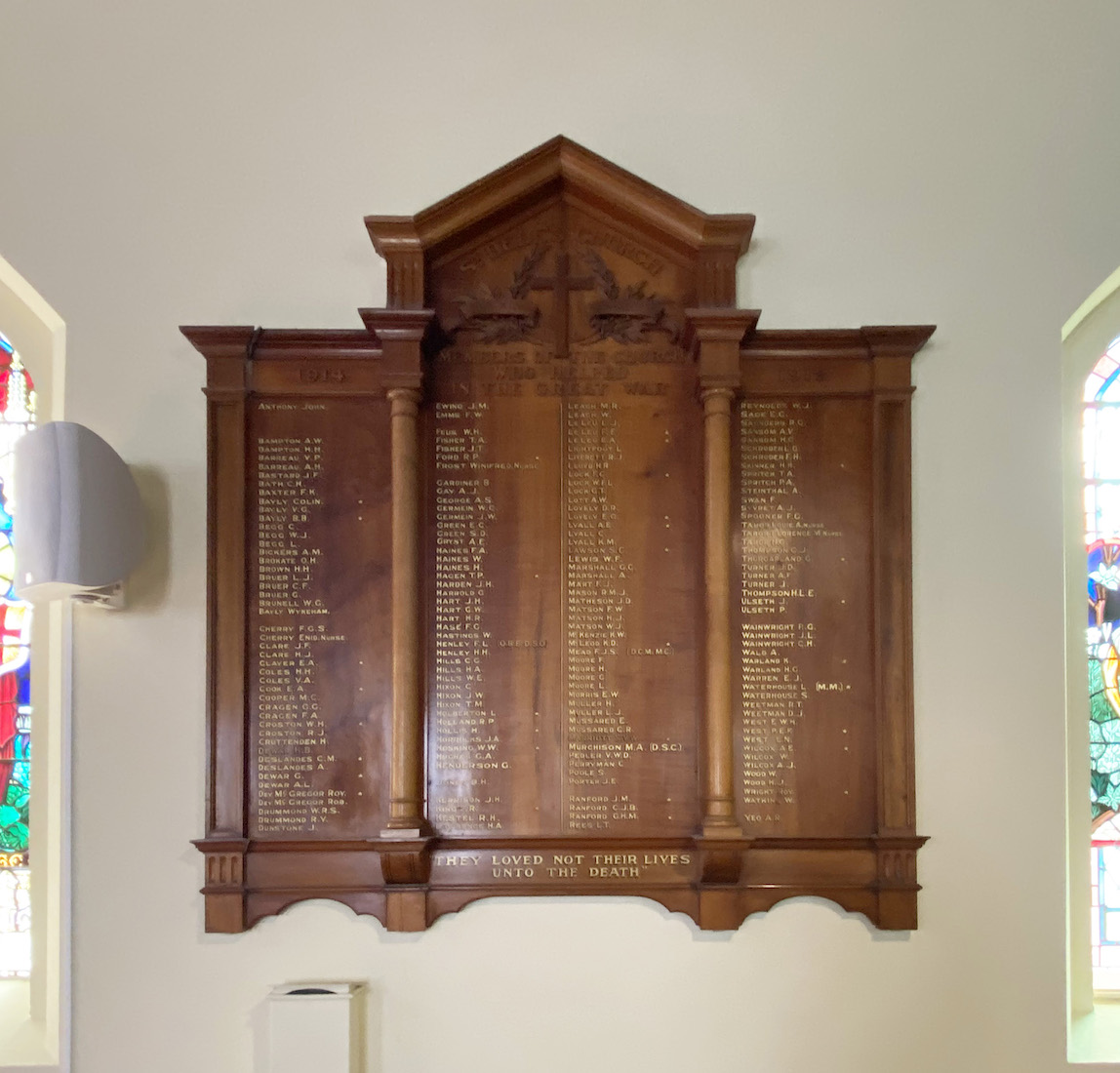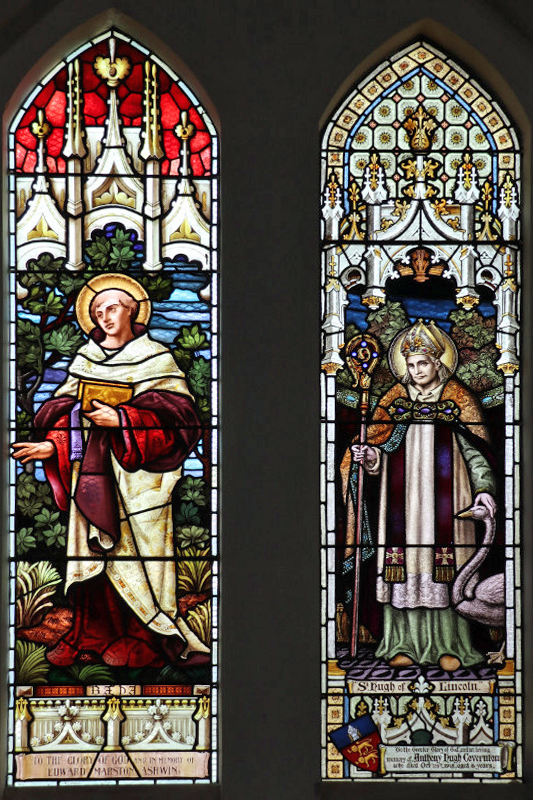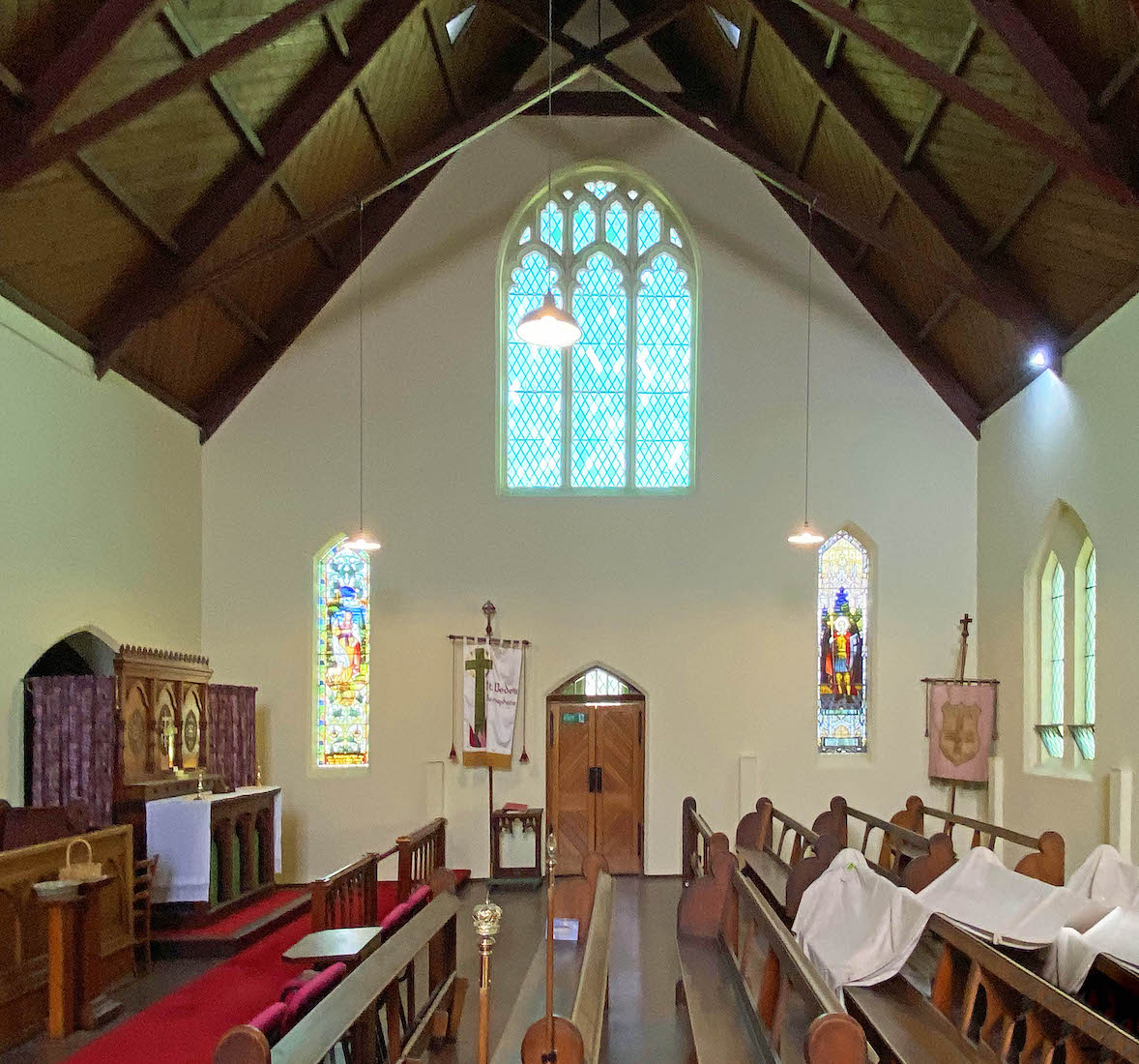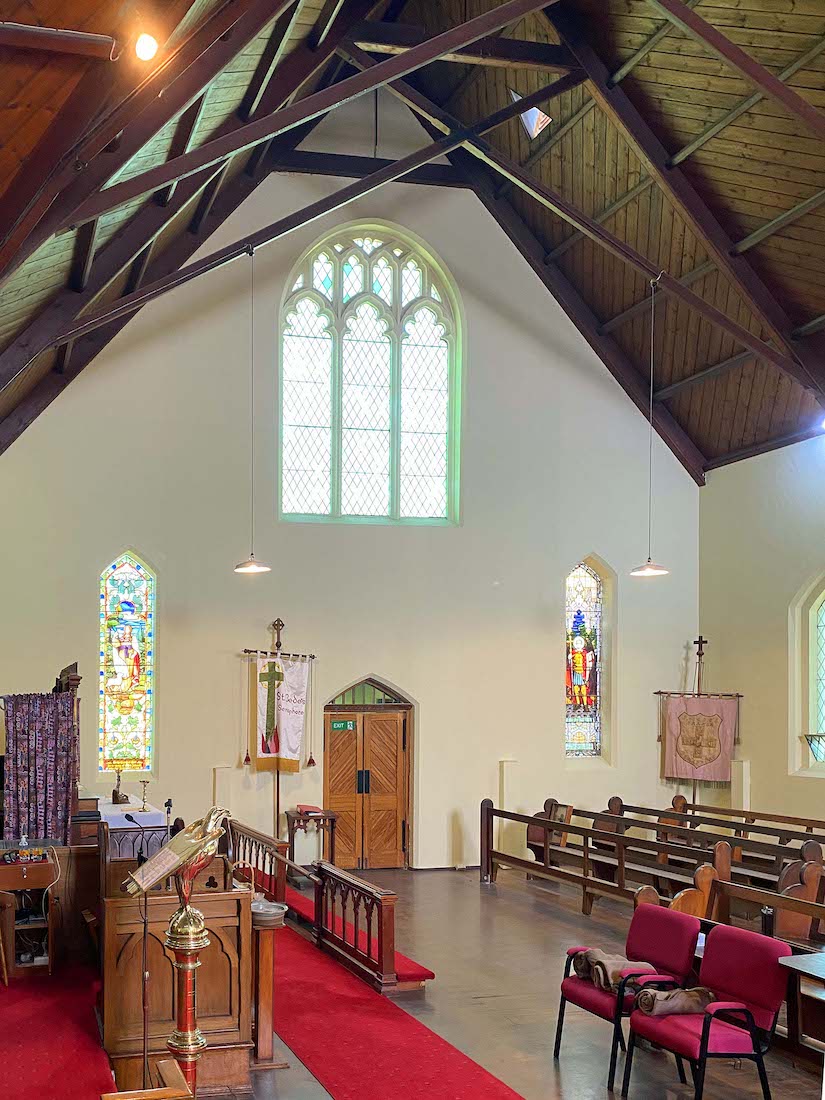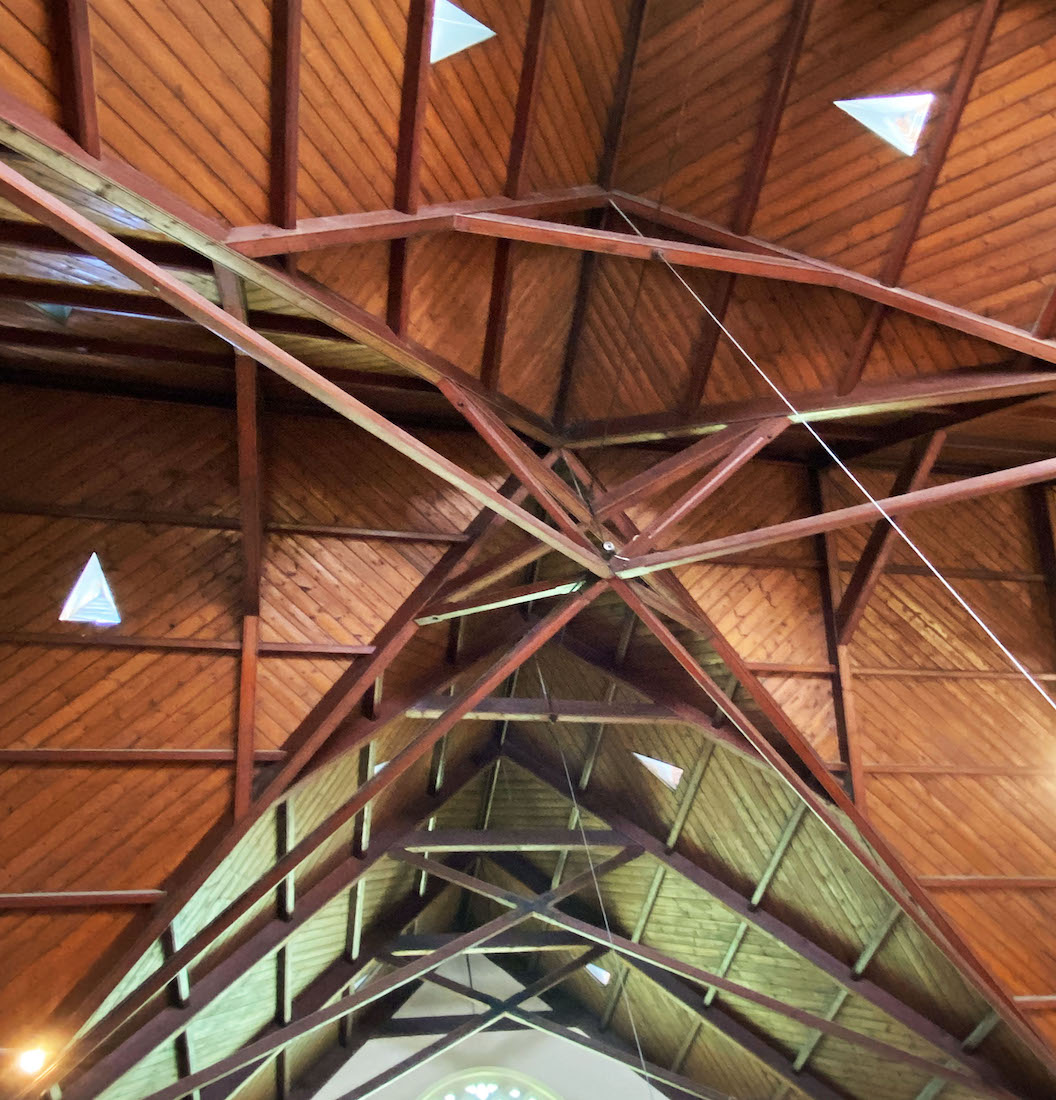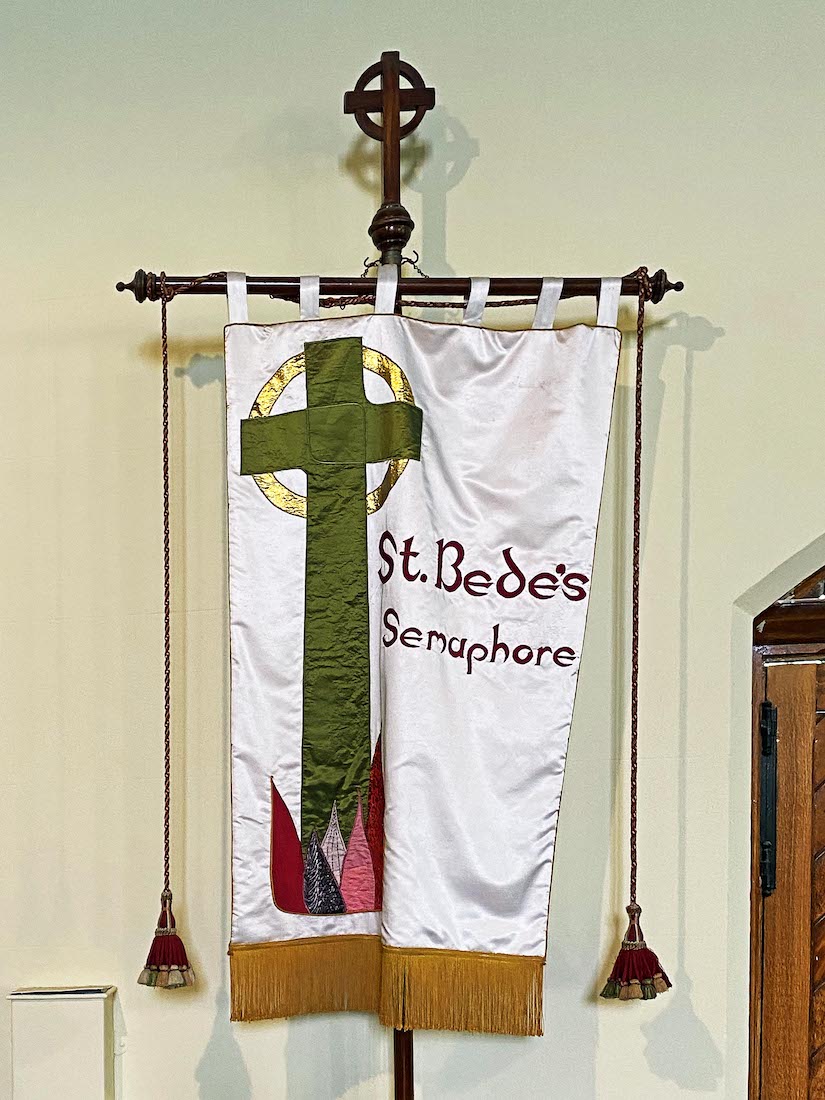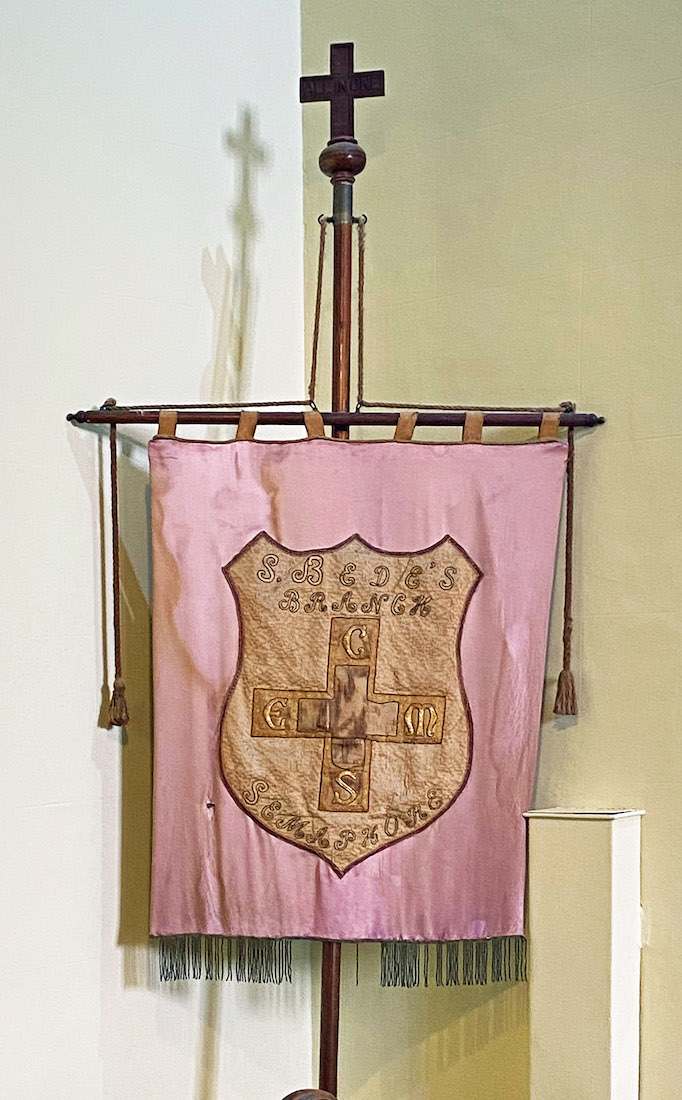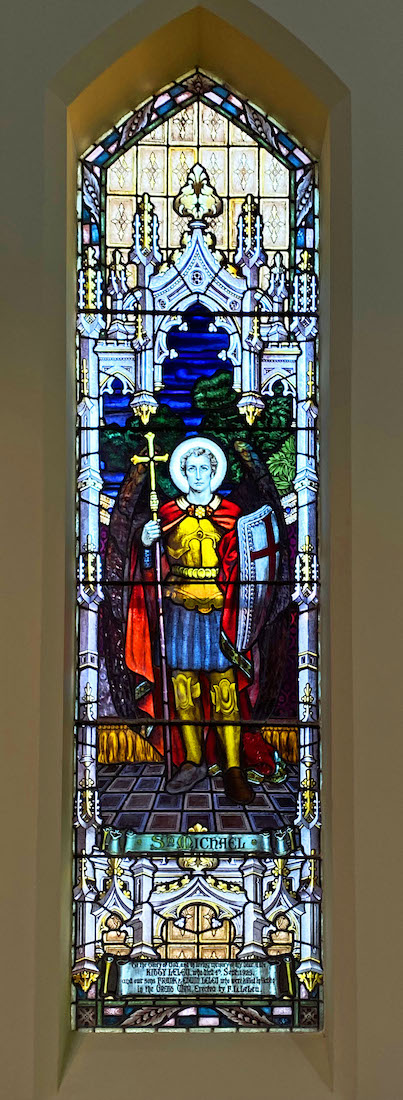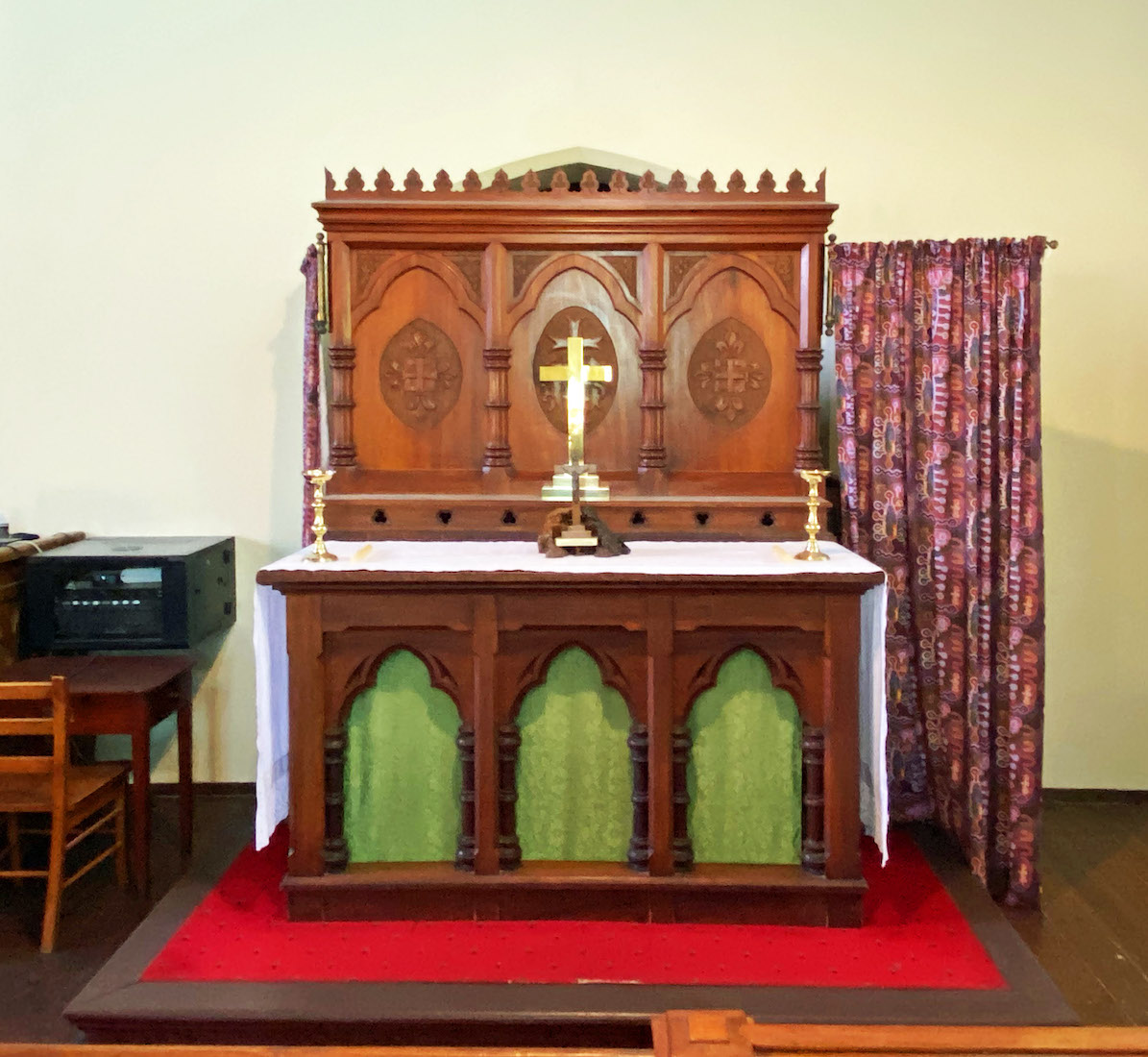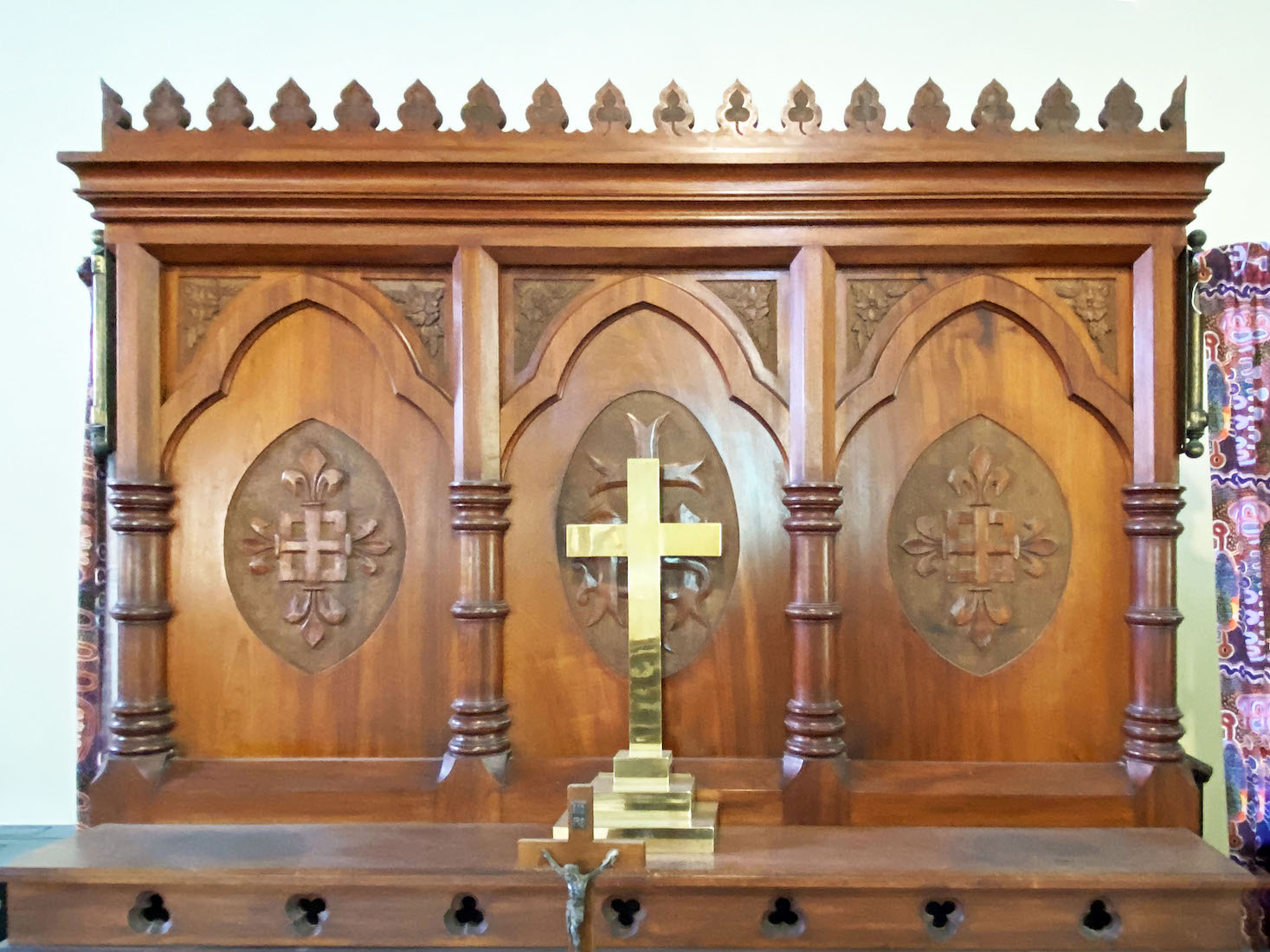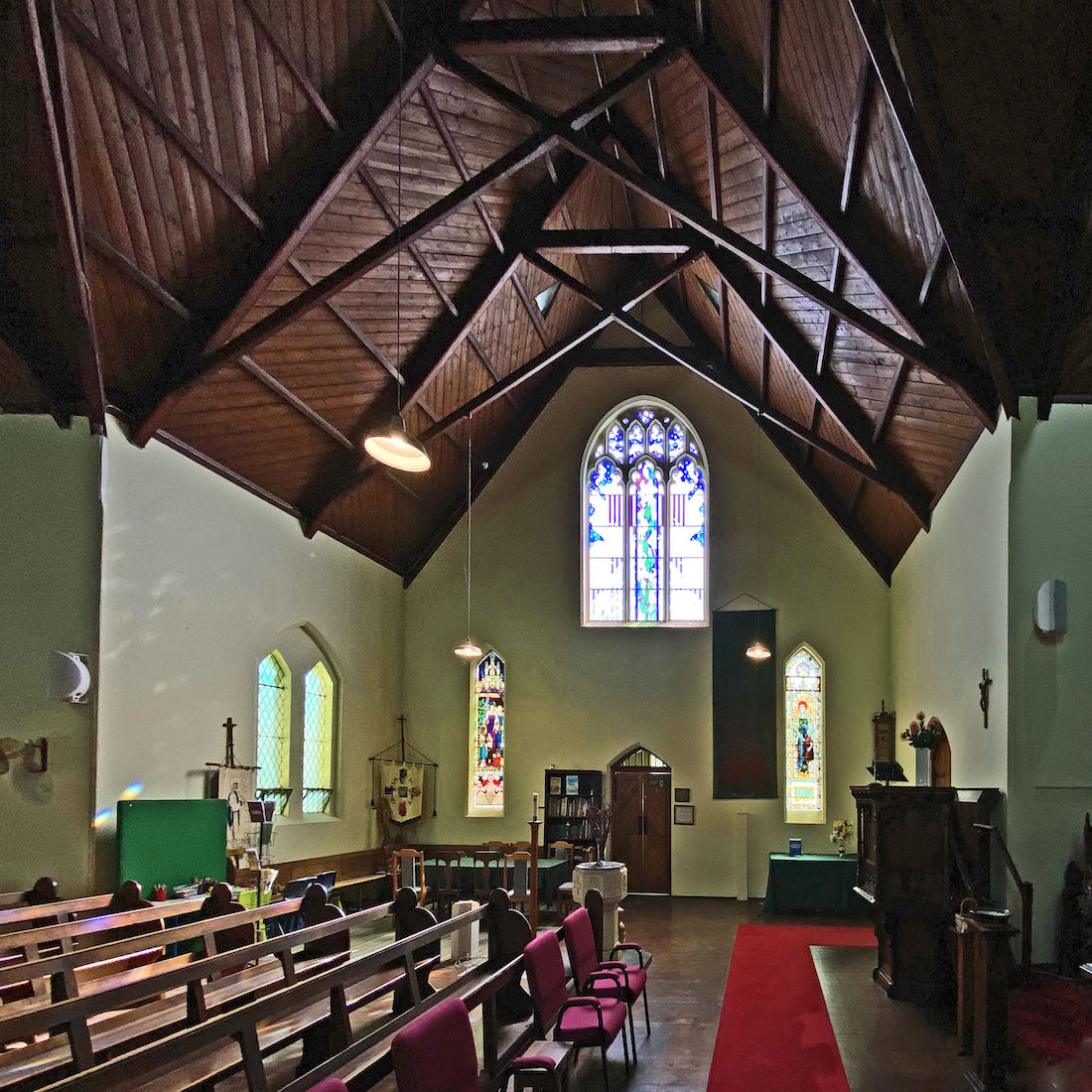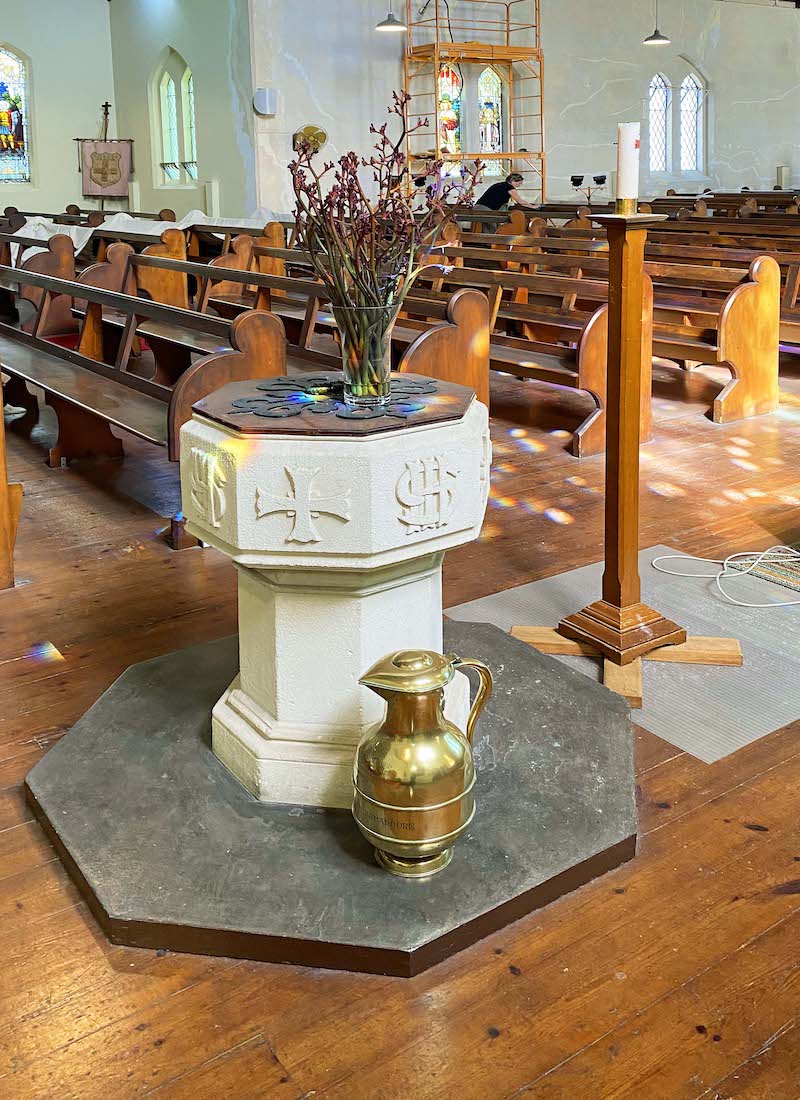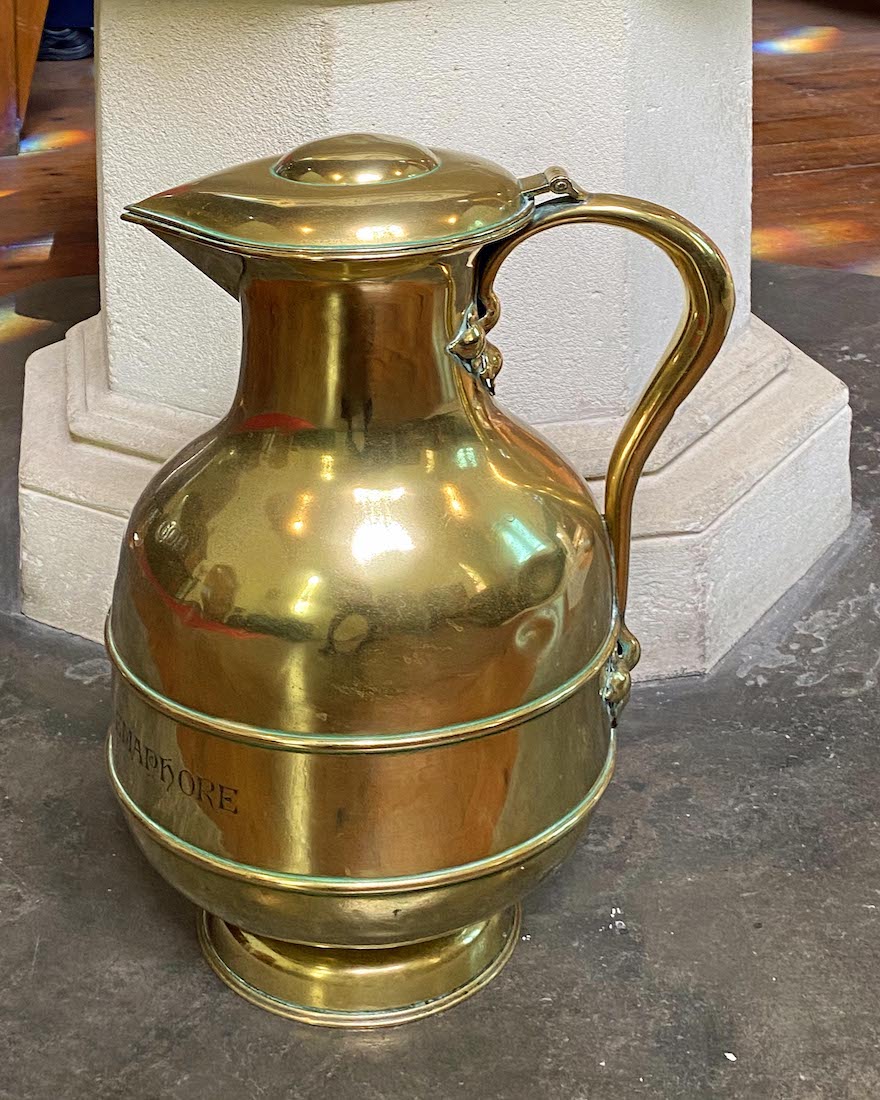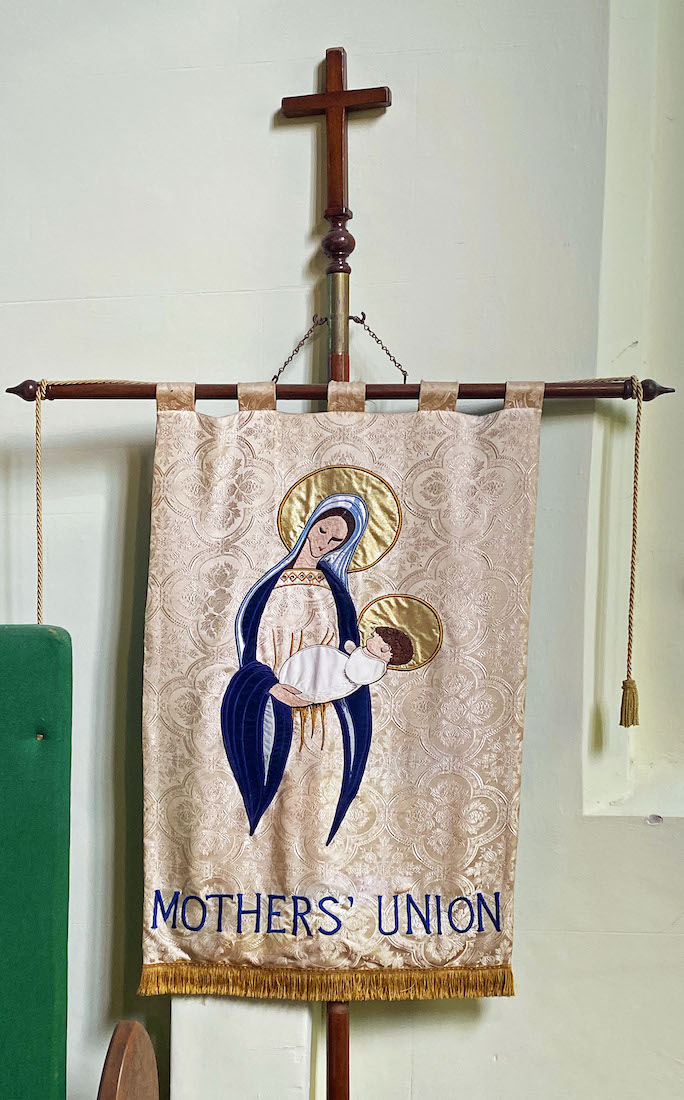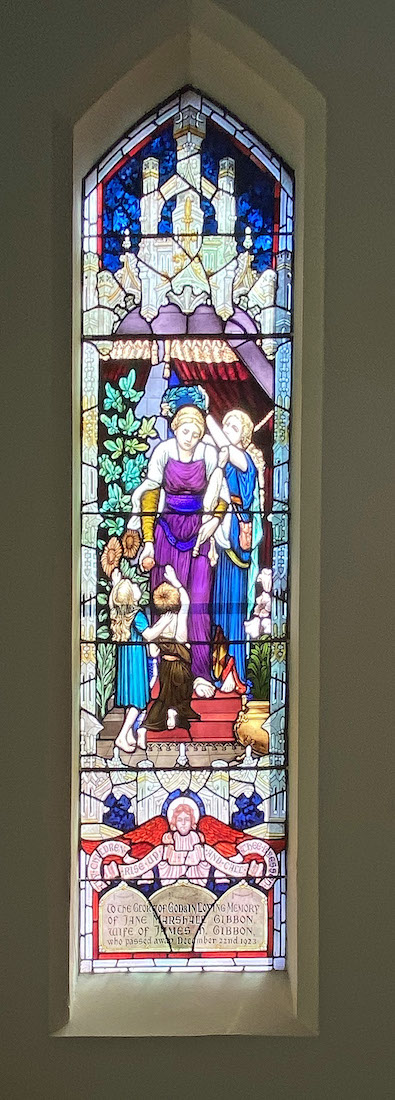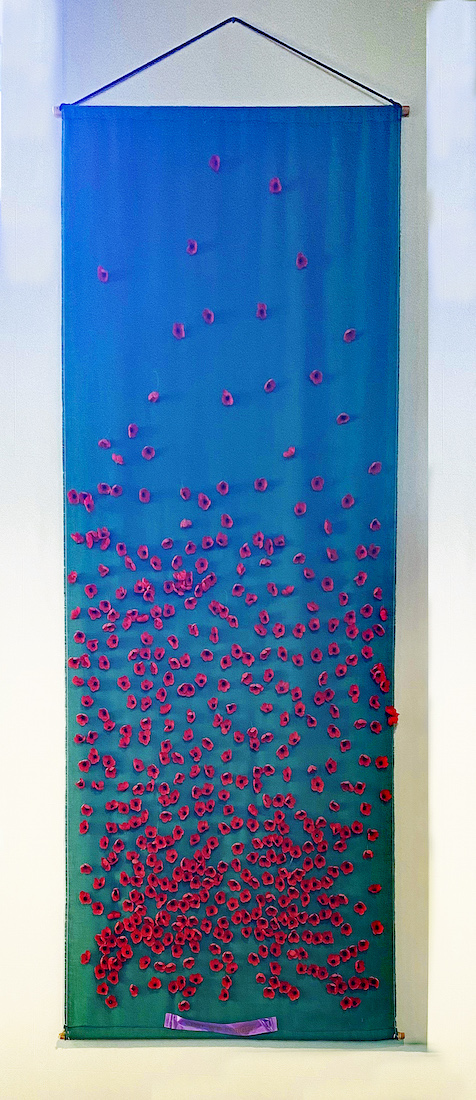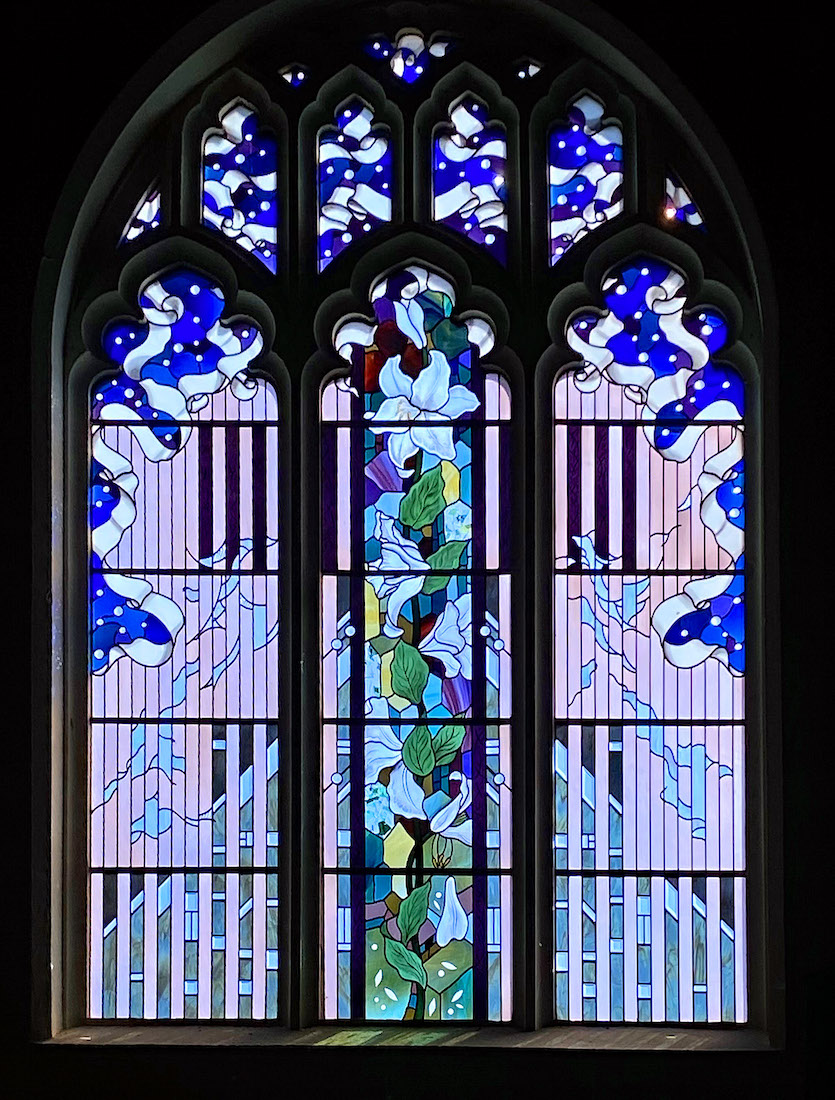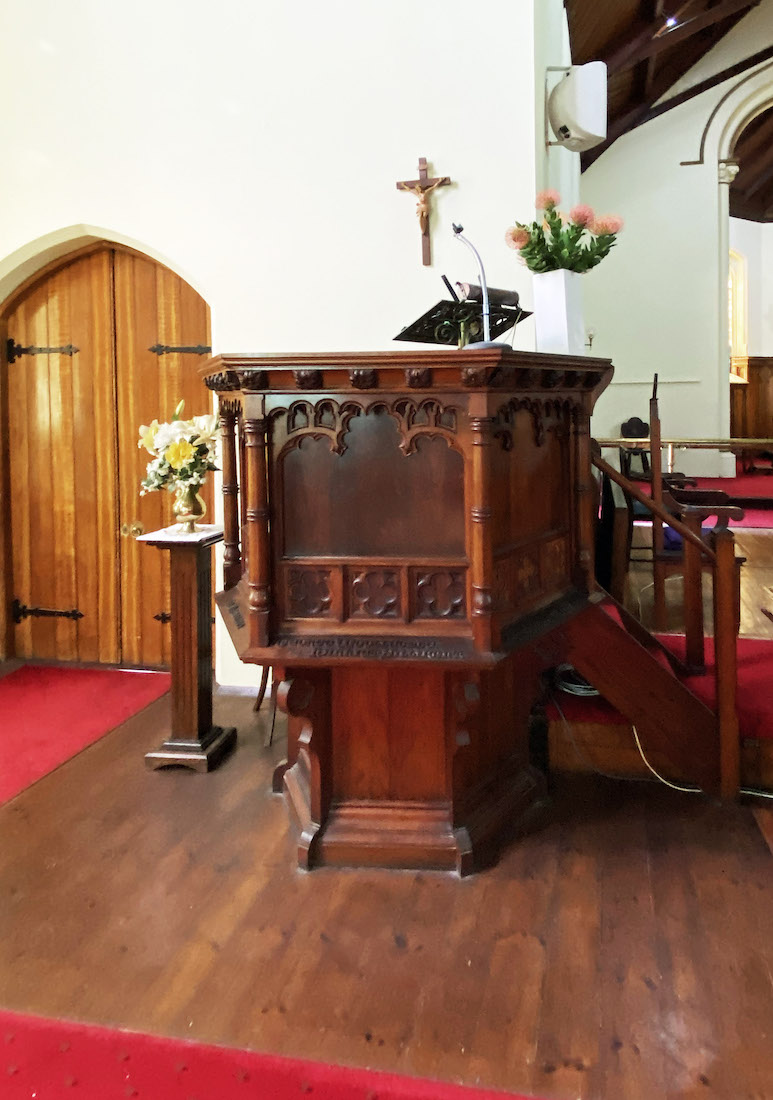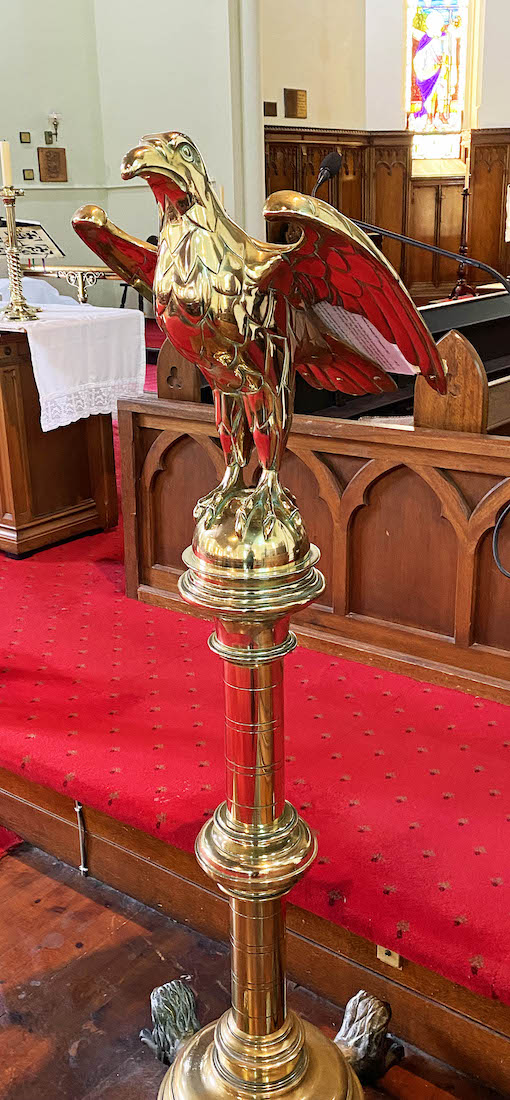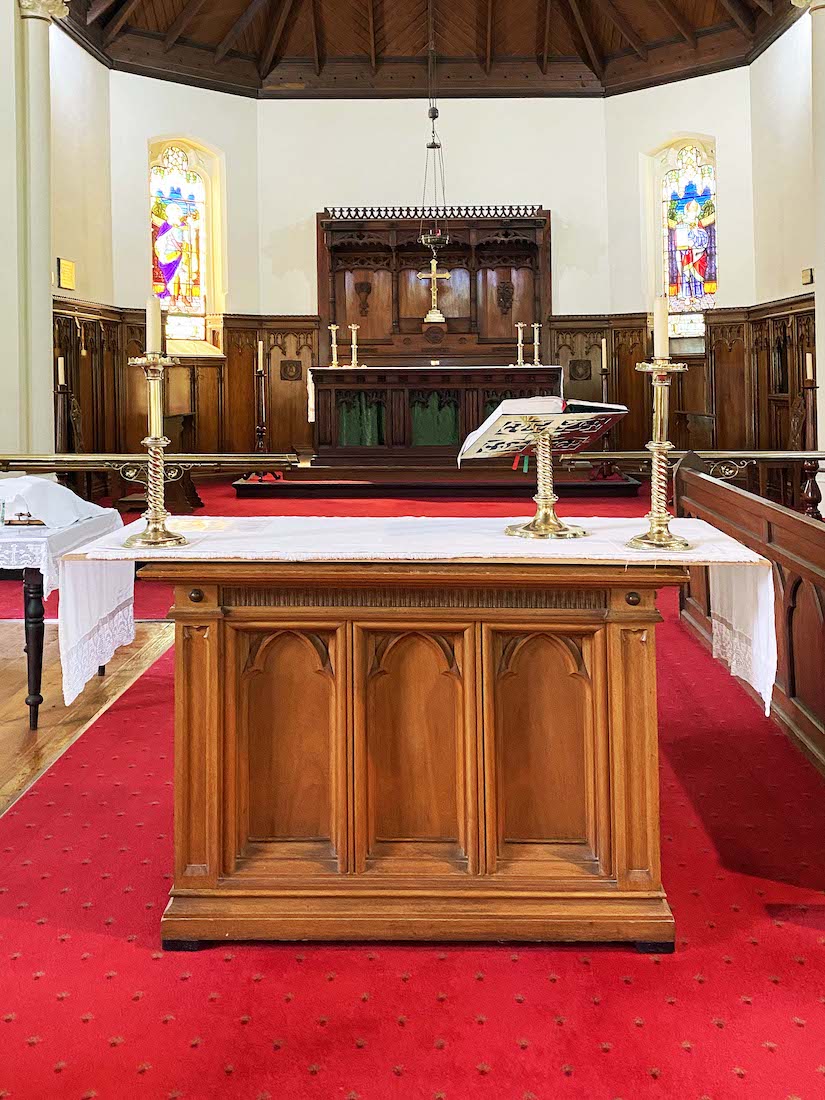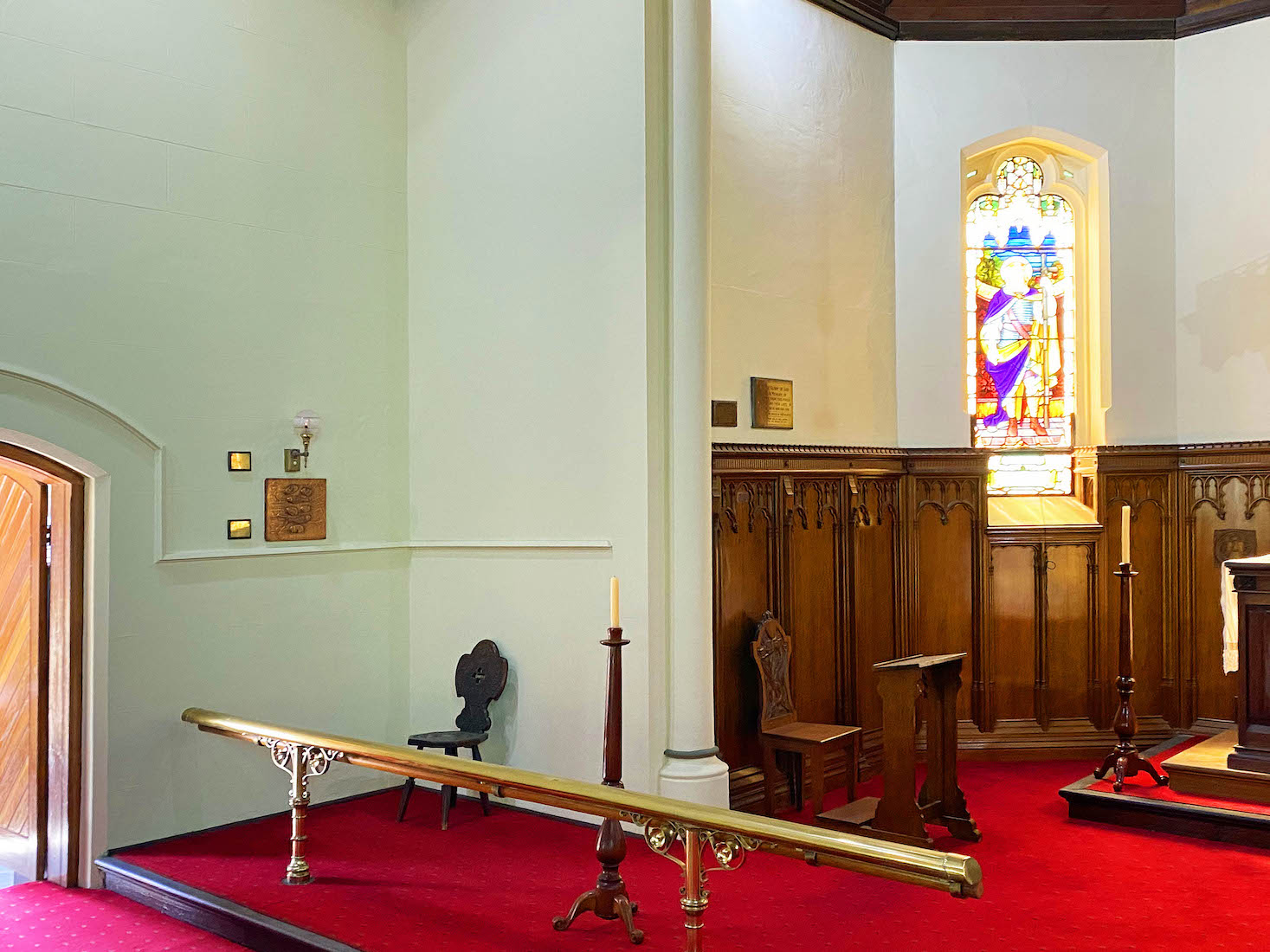21. OLD PHOTOGRAPH OF DURHAM CATHEDRAL
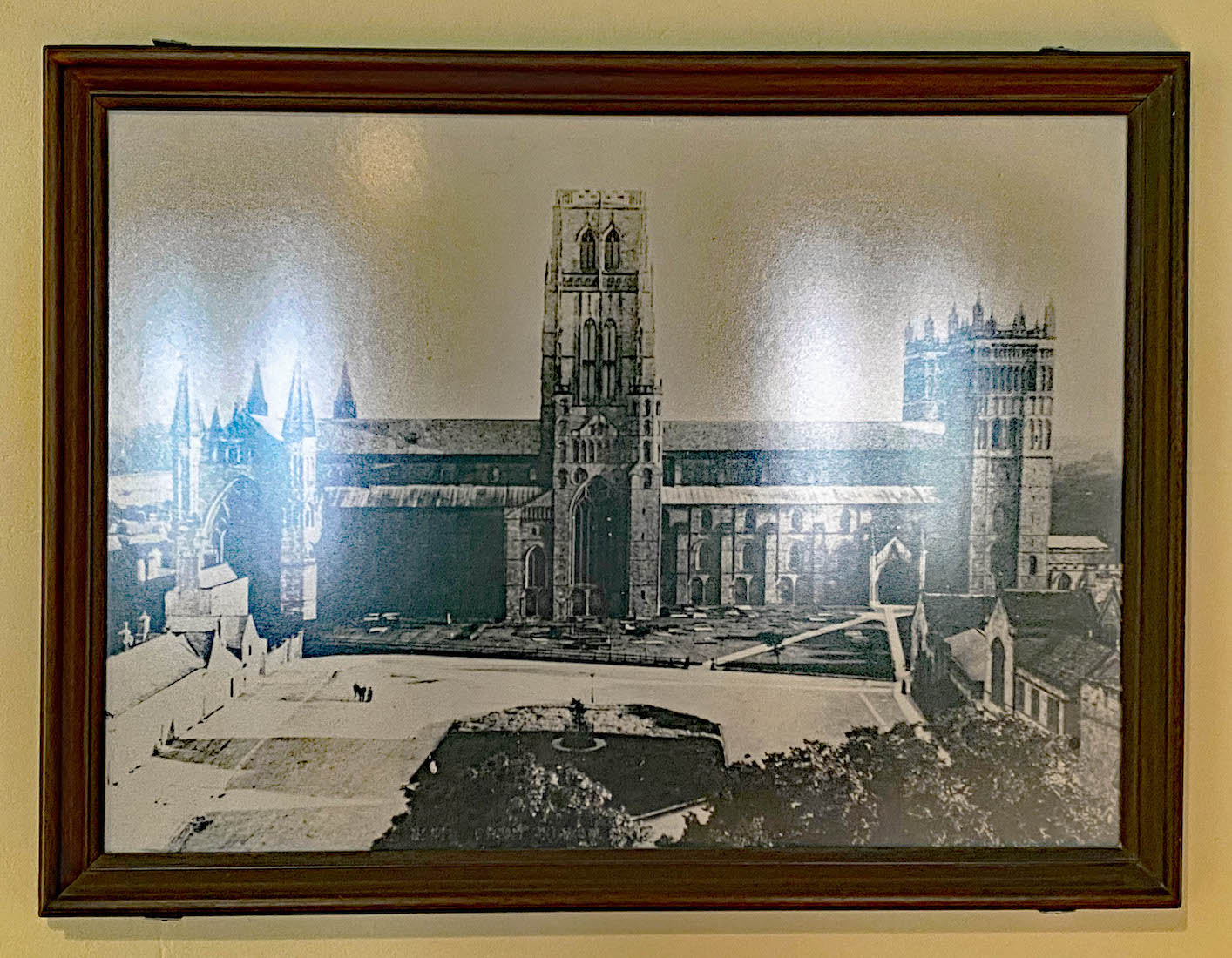
To the right of the window is an old framed photograph of Durham Cathedral. The Venerable Bede – also known as St Bede – is widely regarded as the greatest of all the Anglo-Saxon scholars. He lived and died in between the twin monasteries of Wearmouth and Jarrow in the North East of England between 673 and 735 AD and wrote or translated some forty books on practically every area of knowledge. The Venerable Bede’s bones have been in Durham Cathedral since 1022. They were brought from Jarrow by a monk called Alfred who had them buried alongside Cuthbert’s relics, where they remained until they were moved to the Cathedral’s Galilee Chapel in the 14th century. The name ‘the Venerable Bede’ comes from the Latin inscription on Bede’s tomb in Durham Cathedral, reading: HIC SUNT IN FOSSA BEDAE VENERABILIS OSSA (Here are buried the bones of the Venerable Bede).
22. VERSE AND ...
Above the old photograph is a grouping of three objects with no explanation. At left is a framed text written by the Venerable Bede which reads: ‘CHRIST is that bright morning star, which, when the light of this world fails, bringeth his saints to the joy of eternal life, & to the light of everlasting day.’ ••• At right is a piece of stone and a small piece of timber – perhaps souvenirs of Durham Cathedral?
23. NORTH NAVE WINDOW
Following along the North wall of the nave, we come to a window with two panels portraying St Luke and St George. St Luke was a physician (Colossians 4:14), so it is appropriate that the left window is in memory of Dr Chi Lim Fung MBHS (1966 – 2016). St George is the patron saint of England, renowned for slaying a dragon. The window is dated St George’s Day 1864, and is in memory of Harold Edwin and Adelaide Purches.
24. ROLL OF HONOUR 1914–1918
Just past this window is a Roll of Honour board remembering members of the Church who died in the 1914 – 1918 War. This is a long list of names for a suburban church. The slightly cryptic text at the bottom reads: ‘They loved not their lives unto the death’.
25. NORTH NAVE WINDOW
The third and final North nave window again has two panels. At left the Faith window, was created by H L Vosz, and given in memory of John Bollard & Charles Henry Moritz, Dec 1911. John Bollard was father of two of Charles Henry Moritz’s wives. Charles Henry Moritz, born Johann Carl Friedrich, arrived SA with parents 1849 on ‘Godeffroy’, married Alice Bollard (died 1872), Louisa Winch (died 1890) & Sarah Bollard (died 1910). There were seven children. ••• At right is the Good Shepherd window, in memory of Harry Percival Mackin who died 2 Aug 1902. It was created by H L Vosz, and unveiled 25 Sep 1904. We move across to the South side of the nave ... .
26. SOUTH NAVE WINDOW
There are three windows on the South wall of the nave, but only one, the window at the sanctuary end, has stained glass. Again, there are two panels. ••• The left panel depicts the Venerable Bede. The window is in memory of Edward Marston Ashwin who died 19 July 1901. The window was created by H L Vosz, to a design by J F Williams, and was unveiled 16 Nov 1902. ••• The right panel shows St Hugh of Lincoln. This window was created by Clarksons in memory of Anthony Hugh Covernton, who died 25 October 1918 aged 6 years, also Philippa Mary Covernton who died 14 September 1920. St Hugh, Bishop of Lincoln, is generally depicted with a swan. [Photo Credit: Aquilareen, Flickr. The window was covered by scaffolding during my visit!]
27. SOUTH TRANSEPT
This brings us to the South transept. Items of interest here are two banners, two single-lancet windows on the South wall, and the altar on the East wall. You may notice the small columns rising from the floor here, and in other parts of this Church. This was an early attempt at air conditioning: cool air from under the Church rises by convection, displacing warm air through the roof vents.
28. CROSSING ROOF
The transepts meet the main axis of the Church in the crossing: this has a particularly ornate roof structure.
29. SOUTH TRANSEPT BANNERS
Banners are great ways of adding colour and interest to a Church. The banner at left shows St Bede’s having a Pentecost theme. with Church and flames at the base. ••• The banner at right celebrates the St Bede’s involvement in G.E.M.S. G.E.M.S. is a Christian organisation, run by volunteers, with a programme that is created especially for girls from ages 9-15, with some groups also including a programme called Busy Bees for girls ages 6-8. The name G.E.M.S. stands for Girls Everywhere Meeting the Saviour. This name represents both the mission and vision of G.E.M.S. Girls’ Clubs. The mission of G.E.M.S. is to help bring girls into a living, dynamic relationship with Jesus Christ. The vision of G.E.M.S. is to see girls actively and enthusiastically expressing love for God and others by equipping and encouraging them to live out their faith.
30. SOUTH TRANSEPT WINDOWS
The Eastern window of the South wall of the South transept shows St Agnes. Little is known about Agnes except that she was a member of the Roman nobility, born in AD 291 and raised in an early Christian family. She suffered martyrdom at the age of twelve or thirteen during the reign of the Roman emperor Diocletian, on 21 January 304. She is often pictured with a lamb, most probably because ‘lamb’ is agnus in Latin. The window was given in memory of Ellen Allnuff who died on November 2nd 1901. ••• The Western window shows the Archangel, St Michael. The window is in memory of Kitty, wife of Frederick Leon LeLeu and their sons, Frank Edwin & Edwin Allan, killed in action in WWI. It was erected by F LeLeu, and created by Thompson & Harvey.
31. ALTAR AND CRUCIFIX
An altar is placed against the East wall of the Transept, with entry to a vestry behind. The crucifix and candlesticks on the altar came from St Francis House chapel, and were given by the family of the founder, Fr Percy Smith. St Francis House was a home for inland Aboriginal Australian boys from 1946 to 1959 at Glanville Hall in Semaphore South, Adelaide, South Australia.
32. REREDOS
The back panel (reredos) of the altar is nicely carved in three sections. The central panel shows the traditional IHS symbol – IHS being the first three letters of the name ‘JESUS’ in Greek. Each of the outer carvings shows a Jerusalem Cross on a background of a square and fleur-de-lis.
33. NORTH TRANSEPT
There is more to see, looking across to the North transept. In particular we notice the font in the foreground, two more banners at left, three windows in the far wall and a large hanging banner, and then the pulpit at right.
34. FONT
The font is of a fairly standard design, with a solid octagonal base and supporting column. Around the top are alternating budded crosses and IHS symbols, and when not in use, the font is covered by a solid wooden lid. The lid is topped with a solid metal fitting with ring, which would allow it to be hoisted up if that were required.
35. NORTH TRANSEPT BANNERS
Two banners stand against the West wall of the North transept. At left is the Mothers’ Union banner. A quote from the website of the Australian Branch reads: ‘We are a mission agency of the Anglican Church of Australia and part of the worldwide Mothers’ Union with links to 84 countries and over four million members who share one heartfelt vision - to bring about a world where God's love is shown through prayer and loving, respectful and flourishing relationships.’ The banner at right carries the words Children of St Bede’s along with a stylised cross and dove.
36. NORTH TRANSEPT: BANNER AND WINDOWS
There are two lower windows and a banner on the North wall of the North transept. The window at left shows Mary visiting her cousin Elizabeth. The window is in memory of Jane Marshall Gibbon, wife of James Henry Gibbon. Near the bottom is the text: ‘The children rise up and call thee blessed.’ (Luke 1:48) ••• The banner with its many red poppies is presumably a War Memorial. ••• Shown at right is the Charity window, given in memory of Lottie Swan, daughter of John Warren & wife of Rev Canon Swan, Rector of St Bede’s (1901 – 1918).
37. NORTH TRANSEPT HIGH WINDOW
The triple window in the North transept has the theme of Resurrection, with the Easter lily bursting from the Cross. Smoky verticals represent the industrial skyline of Port Adelaide and the towers of Adelaide Brighton Cement. The window was designed by Lindy Sando, and made by Vaughan Taylor of Art Glass Design, Kersbrook.
39. NAVE ALTAR
At front centre of the nave we find the nave altar – a simple altar with two candlesticks and a reading stand on top. The ‘high altar’ can be seen behind. It is from the nave altar that the Eucharist is administered week by week. It has the advantage that it is close to the congregation, and the celebrant is facing the congregation. We notice that the sanctuary is separated from the chancel by a horizontal brass altar rail.
40. NORTHEAST CORNER OF CHANCEL
In the Northeast corner of the chancel, just behind the altar rail(!) is an aumbry and two plaques.


